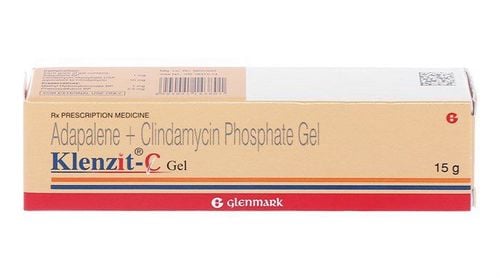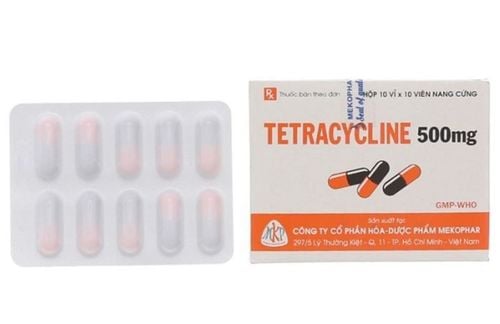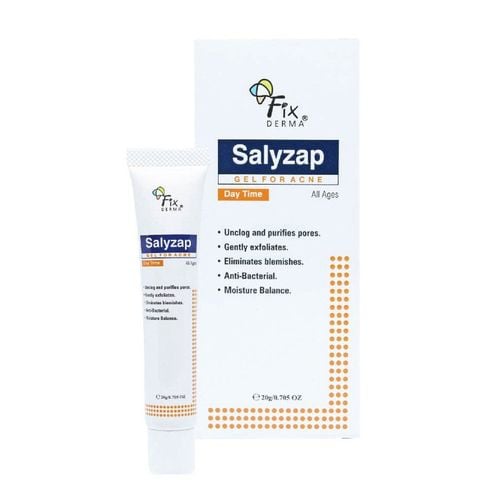This is an automatically translated article.
Zylene Nanogel has the main ingredient Adapalene, a retinoid used for topical application that is effective in treating acne and anti-inflammatory. Therefore, Zylene Nanogel is used to treat acne in adolescents and adults.1. What is the effect of Zylene Nanogel?
Zylene Nanogel has the main ingredient Adapalene with a content of 0.1%. The drug is used to treat the following conditions:
Ingredients Zylene Nanogel is a topical retinoid approved by the FDA for the treatment of mild and moderate acne. In addition, Adapalen is used in the effective treatment of keratosis pilaris and callus. Because the drug has the ability to inhibit keratinocytes and reduce keratin deposition. Mechanism of action:
Zylene Nanogel is effective in reducing the number and severity of acne, promoting rapid healing of developing acne. The drug ingredient Adapalene belongs to a group of medicines called retinoids. It works by stopping the growth of acne-causing cells and reducing swelling and inflammation.
2. Dosage and how to use Zylene Nanogel
Zylene Nanogel is a topical cream and is applied to the skin to be treated. Before using the patient should wash the face clean. Patients should wash their face with a gentle cleanser and allow it to dry completely. Use 1 time per day in the morning or before going to bed. Then, apply a pea-sized amount of Adapalene in a thin layer over the entire skin, avoiding eyelids, lips, and mucous membranes. Patients can apply an oil-free moisturizer instead of Adapalene to help reduce the risk of irritation.
Note: During the time of using the drug, the patient should limit exposure to the sun.
3. Contraindications to the drug Zylene Nanogel
Do not use Zylene Nanogel in patients with a history of hypersensitivity reactions to Adapalene or any of its excipients. Do not use Zylene Nanogel in patients who are allergic to other retinoid drugs. Do not use the drug on pregnant women, photosensitive disorders, eczema, sunburn or concomitant use of other potentially irritating skin care products. Patients with vaginal bleeding Do not use the drug in patients with diagnosed or suspected breast cancer. Overdose and treatment:
If Zylene Nanogel is used in excess of the allowed dose, the patient may experience reactions such as redness of the drug area, scabs or discomfort on the skin. Treatment: Treat according to symptoms.
4. Side effects of Zylene Nanogel
Undesirable reactions when using Zylene Nanogel include: Sensitivity to light, irritation, redness, dryness, itching and burning.
Severe allergic reactions characterized by itching, facial edema, lip swelling and eyelid swelling. If a patient experiences an anaphylactic reaction with symptoms, including facial swelling, rash, chest pain or difficulty breathing, adapalene should be discontinued and the patient should seek medical attention.
5. Precautions while using Zylene Nanogel
Use caution in patients with a history of or current liver tumors (benign or malignant). Use with caution in patients with severe liver disease. Patients with current or history of active deep vein thrombosis or thromboembolic disorders. For pregnant women: Adapalene is present in pregnancy category C according to the previous FDA pregnancy classification system and should be avoided in pregnant patients. Breastfeeding Considerations: Nursing mothers are advised by their doctors not to apply adapalene to the nipple area and to ensure that the infant's skin does not come into direct contact with adapalene-treated skin areas. Patients should use sunscreen and protective clothing on areas treated with adapalene when they are exposed to the sun.
6. Drug interactions
Drug interaction is a change in the effectiveness of a drug or an increase in side effects of a drug due to the simultaneous use of Zylene Nanogel with food, drinks, supplements or with other drugs. other drugs. Therefore, before using the drug, the patient should inform the doctor about the drugs they are using or have used recently to avoid drug interactions.
Interactions with Zylene Nanogel drugs include:
Resorcinol: The risk or severity of side effects may be increased when Resorcinol is combined with Adapalene Salicylic acid: Risk or severity of effects Side effects may increase when Salicylic acid is combined with Adapalene. The antibiotic Clindamycin : Adapalene has been shown to increase the effectiveness of topical clindamycin and also increase the side effects. The basic information about Zylene Nanogel in the above article is for reference only. Because Zylene Nanogel is a prescription drug, patients should not use it on their own, but need to contact a specialist directly for a suitable prescription to ensure safety for health.













